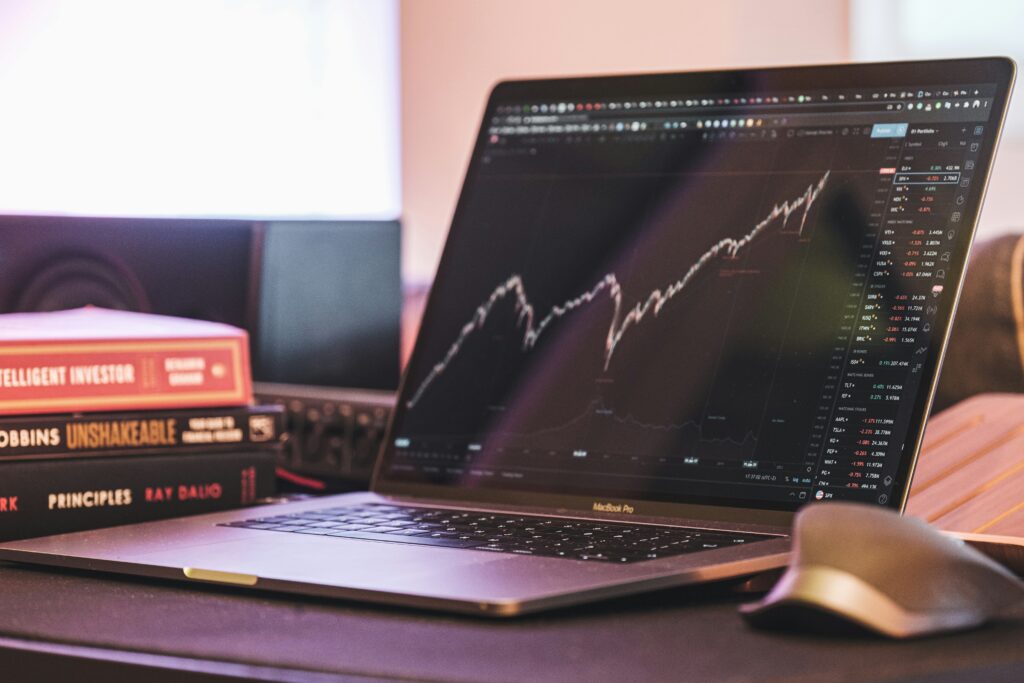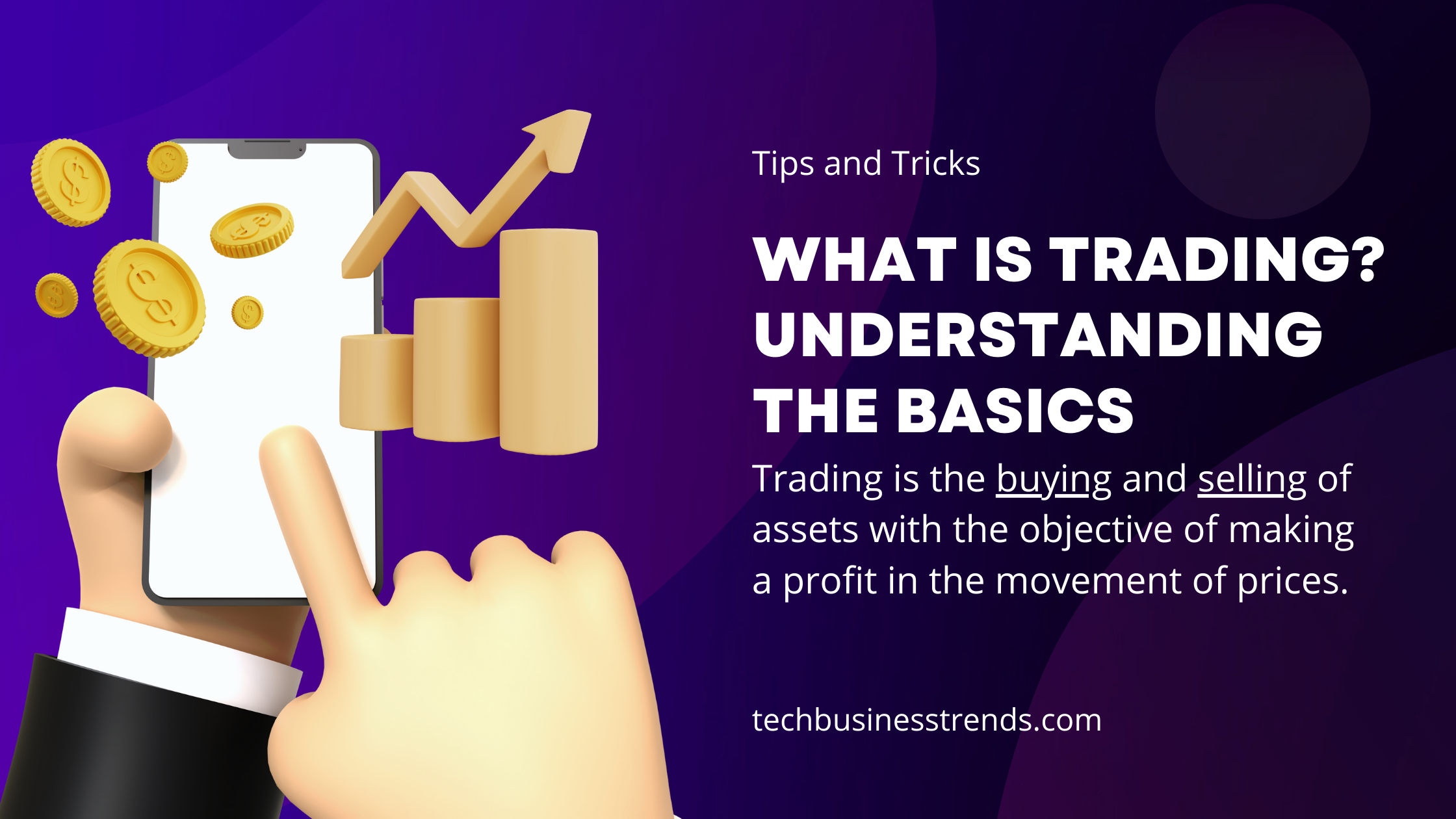The world of finance may seem complicated, but the main motivation is business. Whether you’re thinking about dipping your toe into the market or just want to know how things work, understanding the basics of trading is a great first step.
What is trading?
Trading is the buying and selling of assets with the objective of making a profit in the movement of prices. These properties can be a variety of things, but some common ones are:
- Stocks: Corporate shares. Imagine buying a minority stake in a company, hoping it will do well and rise in value so you can sell your shares for a profit.

- Foreign Currency (Foreign Currency): Currencies such as the U.S. dollar. dollars (USD), euros (EUR), or Japanese yen (JPY). This includes buying a stock that you think will be worth more than any other stock you sell.

- Commodities: Oil, gold, wheat and other commodities. You buy someone’s oil contract, expecting the price to rise so you can sell it later for more.

- Indices: Baskets of stocks that represent a particular market. For example, you can trade with an index that tracks the performance of a technical sector.
Key Concepts in Trading
Here are some key concepts to grasp when it comes to trading:
- Market value: This refers to the current price at which the property is trading in the market. It constantly changes based on supply and demand.
- Theory: This is the basic principle of marketing. It predicts whether the price of the asset will increase (buy) or decrease (sell) to generate a profit. Essentially, you are taking educated guesses about future price movements.
- Trading Plan: This is the defined process by which you make a trading decision. It can be based on a variety of factors such as technical analysis (using chart indicators), fundamental analysis (assessing the financial health of the company), or a combination of both.
- Risk management: This is important to protect your capital. This includes strategies such as stop-loss orders to automatically exit positions when prices are against you, thereby limiting potential losses.
- Position Sizing: This determines how much capital you allocate to each trade. It’s important not to risk too much on any one project.
- Liquidity: This refers to how easily you can buy or sell an asset. They can get into and out of high-cash properties quickly, while low-cash properties can be difficult to sell.
- Margin: This allows you to control more space with less money. However, it is a double-edged sword. While it can increase your profits, it can also significantly increase your losses.
Types of Trading
The world of trading can be entered through diverse doorways, relying on your risk tolerance, time dedication, and normal desires. Here’s a breakdown of some not unusual buying and selling kinds labeled by using their timeframes:
Short-Term Trading
- Day Trading: This involves establishing and last positions inside the equal buying and selling day. Day buyers capitalize on intraday charge movements, aiming for brief earnings. It’s a fast-paced and excessive style that calls for steady tracking and a high level of attention.

Medium-Term Trading
- Swing Trading: Swing investors preserve positions for days, weeks, or even months, aiming to seize earnings from short-time period traits. They examine charts and market situations to identify ability fashion reversals or continuations. This style gives greater flexibility than day buying and selling but still calls for lively management.

Long-Term Trading
- Positional Trading: This is a more affected person approach in which buyers preserve positions for months or maybe years. They are conscious of the lengthy-time period fundamentals of an asset, which include a corporation’s boom capability or an industry’s outlook. Positional buying and selling calls for much less energetic control but necessitates thorough studies and a strong know-how of underlying trends.

There’s also
- Algorithmic Trading: This includes the use of computer applications and algorithms to automate trading selections primarily based on pre-described rules. This fashion can execute trades in no time and effectively, but it calls for programming abilities and a deep knowledge of algorithmic improvement.
Is Trading Right for You?
Trading can be a tempting way to maximize profits, but it’s not for everyone. Here’s a breakdown to help you decide if it matches your financial goals and personality:
Consider whether the job is right for you
- Have a high risk tolerance: Trading has an inherent risk of losing money. You need to be comfortable with the possibility that your predictions could be wrong and you could lose trades.
- Are they goal-oriented: Do you want short-term profits to meet market trends, or do you want long-term revenue? Business strategies accomplish these goals.
- It can invest time: Researching markets, researching positions and applying them diligently can take a lot of time. For example, day trading requires constant monitoring.
- You Have Discipline: Sticking to your marketing strategy and dealing with emotions is important. Markets can be volatile, and emotional decision-making can lead to costly mistakes.
- Self-directed learners are: The onus is on you to constantly learn and change your ways. There are many options, but the onus is on you to stay abreast of market trends and develop your trading skills.
Trading Might Not Be Ideal if You
Risk averse: Those who prioritize capital preservation may lose money. Consider investing for a longer term, reduced risk approach.
Impatience: Creating a successful business plan takes time and experience. Don’t expect to make money quickly.
Have less time: It can be difficult to actively fill positions if you can’t devote enough time to research and analysis.
Starting a business
If you’re interested in digging deeper, there are plenty of resources:
Online brokers: Many online platforms offer user-friendly options for trading properties.

Educational Resources: Websites, courses and books can provide valuable insights into trading strategies and risk management.
Account Practice: A demo account allows you to simulate trading without risking real money.
Remember: trading involves high risk and has no guarantee of success. Always do your research, understand the risks involved, and never invest more than you can afford.
FAQs
- What is the difference between trading and investing?
Trading is generally short-term and focuses on taking advantage of short-term price movements. Investing, on the other hand, takes a longer-term approach, aiming at increasing wealth over time through asset appreciation.
- Do I need more money to start a business?
No, you don’t need a huge amount of money to get started. However, it is important to start small and gradually increase your investment as you gain experience and knowledge.
- What are the risks of the project?
The main risk is losing money on trades where asset prices run counter to your forecast. Other risks include auction fees, margin calls (if leveraged), and the constant possibility of unexpected market fluctuations.
- Is there any confidence in the work?
Unfortunately, it is not. The market is unpredictable and its success is unpredictable. However, by educating yourself, implementing good risk management, and having healthy expectations, you can increase your chances of success.
- Where can I learn more about the project?
Many online resources, courses and books can provide you with the knowledge and skills you need for employment. The idea of opening a working account to test your options before risking real capital is also a smart one.
